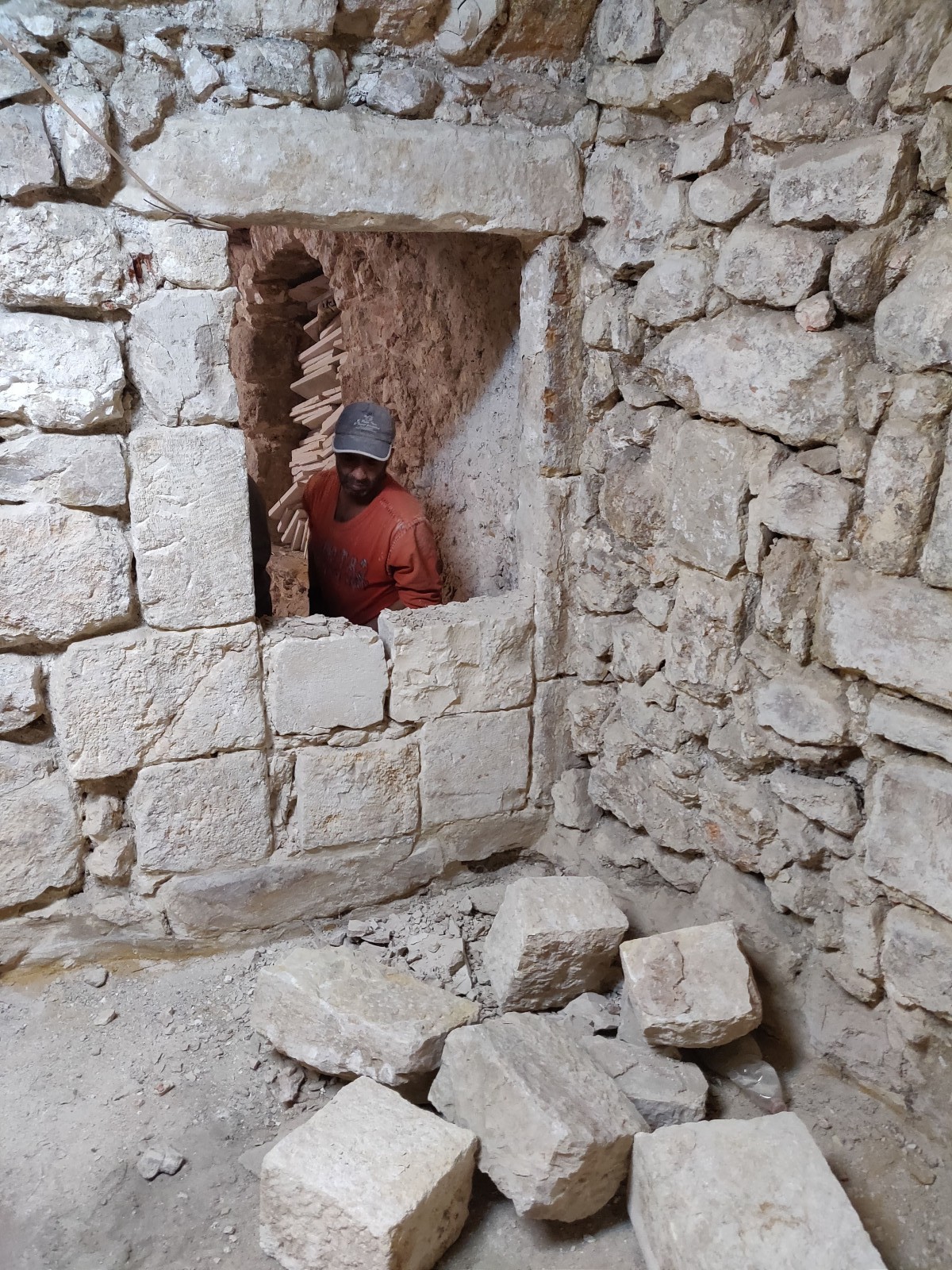A museum in a unique place: the Saint Saviour monastery
Expelled by the Turks of Mount Zion, in 1559 the Franciscans found refuge in a former Georgian monastery located at the heart of Jerusalem. In the archives of the Custody of the Holy Land, several documents recall the slow process of moving from the monastery of Saint John the Theologian (known as the “monastery of the Amud” where “Amud” means “column” in Arabic) to the Saint Saviour monastery. “The Franciscans travelled all over the city in search of a suitable place. They saw that several churches belonging to the Georgians remained empty whereas in the Amud monastery there resided just three Georgian women. The Ottoman authorities, by order of the Sultan himself, had authorized the establishment of the Franciscans in the monastery, but they had not counted on the resistance of the Georgians who were unwilling to part with a place that had belonged to them since the 5th century,” says Tamila Migaloblishvili in his book Georgians in the Holy Land, published in 2014.
The year 1559 marked the purchase of the Saint Saviour monastery and the church by Brother Boniface of Ragusa, Custos of the Franciscan community. “In the following years, the Franciscans purchased from the Georgians the house, the orchards and the vineyards attached to the monastery. With the agreement of the Sultan, the Franciscans repaired and modified the monastery,” continues Tamila Migaloblishvili. Indeed, in a typically Oriental configuration, the monastery originally possessed a church intended only for the use of nuns.
However, at the same time, the Council of Trent (1545-1563) gave new pastoral directives to the Church. Brother Metodio Brlek states in his book The Church of Saint Saviour – History and Art: “In this small church (a true domestic church since it is included within the monastery/convent), during the first century of Franciscan ownership, saw the rebirth – after medieval times – of Catholic life in the Holy City, in an organized form, by which I mean the church became the seat and center of the first Catholic parish of Jerusalem.” The creation of the Congregation for the Propagation of the Faith in 1622 only encouraged this pastoral activity of the friars.


“The fact of being in the city and not outside the walls, as during the time of their first home on Mount Zion near the Cenacle, meant for the Franciscans a permanent and more regular contact with the people of the place,” continues Brother Metodio. To look into the history of this monastery and this church is to follow the long path of the first Catholic parish community in Jerusalem which, for nearly two centuries, was the only Catholic institution of the city. Sources counted 68 faithful in 1664, 320 faithful in 1719, and today, the Saint Saviour parish has around 5,000 members! The parish is still run by the Franciscan friars and has expanded to include several places of worship. The monastery still has communal life and houses around 100 friars including the International Seminary of the Custody.
“We are at the living heart of the Custody of the Holy Land, the motherhouse. We are in the first stage of construction: we are removing cement plasters and the modern floors made in the 1980s to free the ancient structures in order to study them, to understand them and develop an architectural project respectful of the place and its history. In the second step, we will have to carry out a reconstitution survey in 3D to have as precise a picture of the structures as possible. This will permit us to measure the thickness of the walls, their needs in terms of consolidation, their texture and the level of humidity. We are faced with the imperative to preserve the works which will be exposed, without counting all the requirements of an international museum: the reception of visitors in need of certain accommodations, the smoothness of the walkways, the security, and the emergency exits. All of this is not naturally present in a building with such complex historical stratification,” shares Vincenzo Zuppardo, the architect of the Custody of the Holy Land in charge of the Terra Sancta Museum.
It is also a challenge for Jérôme Dumoux, museographer of the Historical Section: “The Historical Section will consist of 20 rooms of various sizes, arranged in spaces which existed in different epochs, a bit like the history of the Franciscans in the Holy Land, from their arrival 800 years ago to today. We want a scenography which embodies this unique place while also being very contemporary and comparable to the best museums. We will highlight the stones of Jerusalem found throughout the Old City. Personally, I am in favor of refined and sober scenography prioritizing the play of light, different angles and perspectives, the refinement and the softness of color suitable for these exceptional works. A “successful” scenography is one which you cannot guess! One of the great challenges will be the conservation and preservation of the works, for example, we must devise a rotation of the liturgical vestments. Some of them have been protected from the dust and the light for centuries, we must not damage them. From now on, we must think about the reserves and their accessibility. Other works, offered for worship, must be able to “go out” of the museum for certain holidays: we are facing “living” works that can weigh several hundred pounds! We must foresee the lifts that will be needed. This requires considerable work.”



